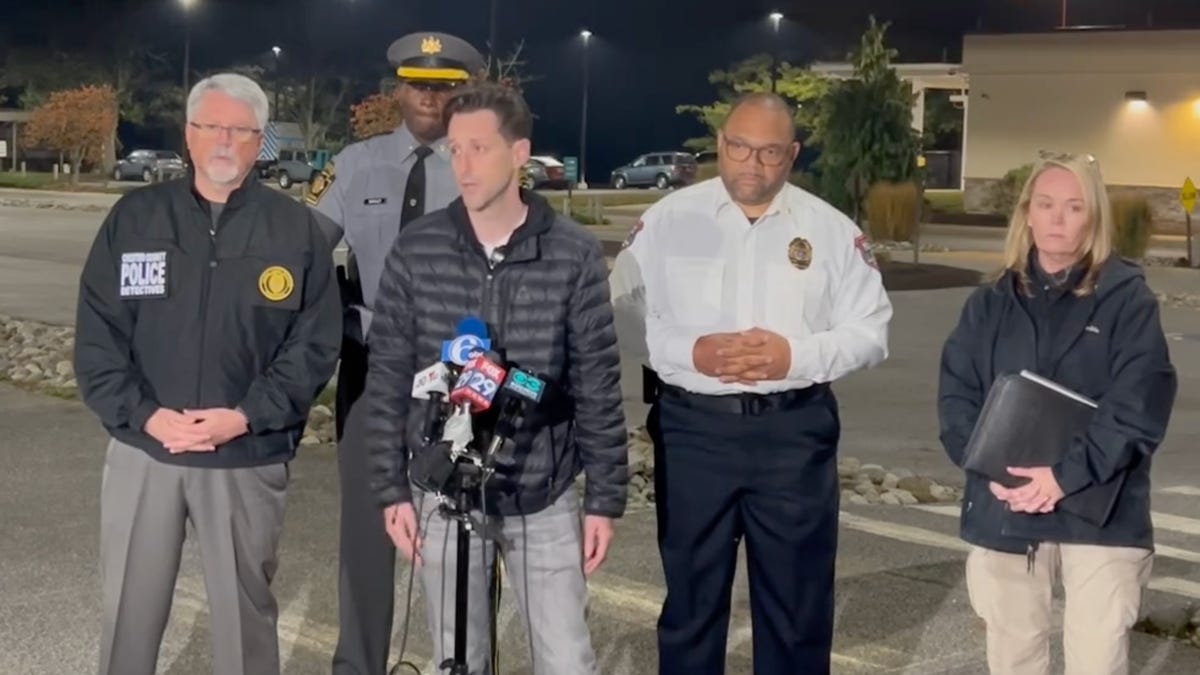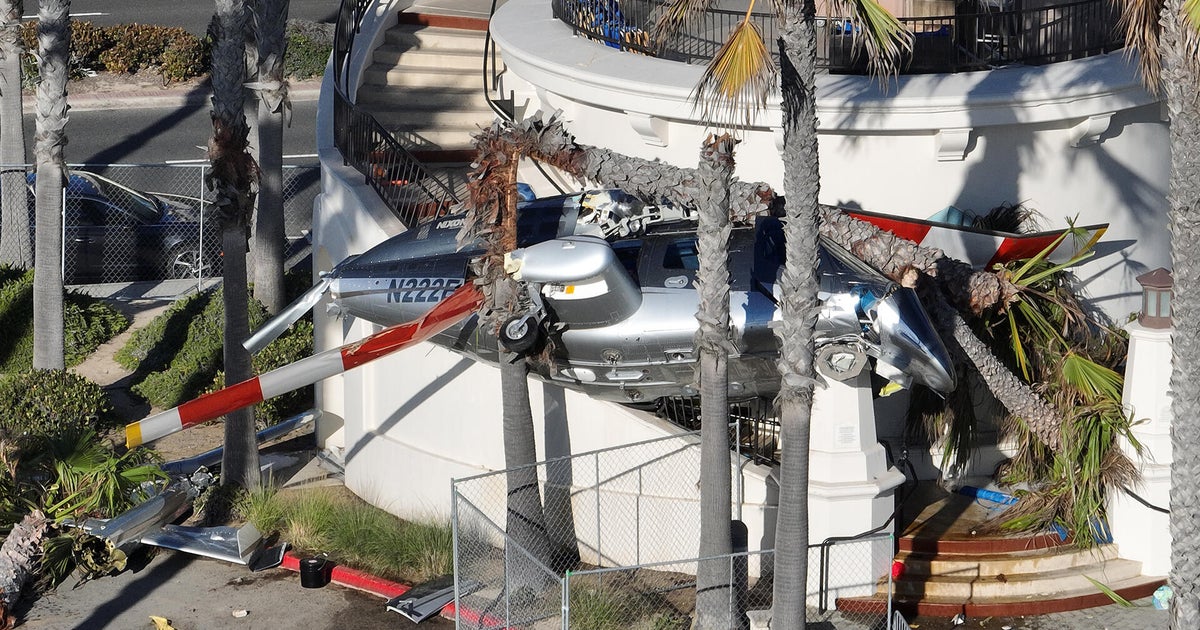Alaska
Scientist at Plymouth conservation nonprofit dies in remote Alaska crash – The Boston Globe

Schulte had traveled to Alaska to conduct conservation work, the statement said. He and the helicopter pilot were flying west from Prudhoe Bay to an area where he planned to outfit shorebirds with recording devices when the helicopter crashed on Wednesday, according to a spokesperson for Manomet Conservation Sciences.
The region Schulte was visiting has become a flashpoint in the debate over balancing the nation’s energy needs and confronting climate change. The oil company ConocoPhillips wants to establish an oil drilling venture there known as the Willow Project.
Schulte had also planned to visit the Arctic National Wildlife Refuge, where he was to lead a crew tracking the migratory routes of whimbrels, another shorebird, with satellite transmitters, Manomet Conservation Sciences said.
The National Transportation Safety Board said the crash of the Robinson R66 helicopter killed the pilot and passenger, the only two people aboard. Authorities have not announced what caused the crash and are investigating.
Alaska Public Media identified the pilot as Jonathan Guibas, 54, who worked for Pollux Aviation in Wasilla. Guibas’s mother told the news organization that Guibas had joined the company about a month ago, and had previously lived in California, Guam, and Virginia.
The crash occurred on the first day of the bird study, about 20 miles west of Deadhorse in North Slope, the northernmost section of the state, Clint Johnson, chief of the safety board’s regional office in Alaska, said Friday.
“It’s in a very remote part of Alaska,” Johnson said. “There’s nothing there. It’s treeless, barren, in the middle of no place.”
Earlier last week, the region had been visited by high-ranking members of the Trump administration.
Energy Secretary Chris Wright, Interior Secretary Doug Burgum, and Environmental Protection Agency Administrator Lee Zeldin toured parts of the North Slope to advocate for President Trump’s desire to open parts of the Alaskan wilderness to drilling and mining.
The helicopter had taken off at about 10:40 a.m. The pilot had received special weather clearance, known as VFR, or visual flight rules clearance, Johnson said.
North Slope Borough Search and Rescue traveled to the crash site on Wednesday and retrieved the victims’ bodies; on Friday afternoon, NTSB investigators visited the scene, which is only accessible by helicopter, he said.
An NTSB meteorologist and air traffic controller are working with investigators, who plan to transport the helicopter wreckage to Deadhorse to continue their work, according to Johnson. Officials plan to place the wreckage in a sling tethered to a helicopter for the journey back to Deadhorse, which has an airport, he said.
Last Saturday, Schulte shared photographs of violet-green and tree swallows he had spotted at Creamer’s Field, a wildlife refuge in Fairbanks, Alaska, according to his Instagram page.
Schulte coordinated an American oystercatcher recovery program that was launched in 2009 at Manomet Conservation Sciences. Conservation work by the program and its partners along the East Coast helped to rebuild the American oystercatcher population by 45 percent, the organization said.
“Shiloh gave his life in the service of something greater than himself, dedicating himself to preserving the natural world for future generations,” the group’s statement said.
In March, Schulte discussed progress in regrowing the population of the American oystercatcher, a striking shorebird with long, orange-red bills and black-and-white plumage that lives along the Atlantic and Gulf coasts, according to a news release from Manomet Conservation Sciences.
In 2008, he said the population had dropped to fewer than 10,000 birds across the Americas, a 10 percent decline. Conservation efforts reversed that slide and there are now more than 14,000 birds.
“This success proves that when we commit to conservation, we can restore declining species,” he said in a statement on March 13.
Following the devastating BP oil spill that released millions of barrels of oil into the Gulf of Mexico in 2010, Schulte led a crew of researchers enlisted by the government to document the environmental impact on wildlife.
Schulte’s team was hired by the US Fish and Wildlife Service to locate resident oystercatchers in coastal Louisiana and outfit the oiled ones with radio transmitters to track their health, he told the Globe in 2010.
He earned a doctorate at North Carolina State University, where he studied American oystercatchers on the Outer Banks and helped to band and track the birds, according to his biography on the website for Manomet Conservation Sciences. As an undergraduate student, Schulte studied wildlife biology at the University of Vermont.
He was a competitive distance runner and earned a second-degree black belt in tae kwon do, the biography said.
In April, he ran the Boston Marathon, finishing the race with a time of 2 hours, 52 minutes, and 50 seconds. The time placed him 137th among 2,386 men between ages 45 and 49 who competed, according to results from the Boston Athletic Association.
Laura Crimaldi can be reached at laura.crimaldi@globe.com. Follow her @lauracrimaldi. Tonya Alanez can be reached at tonya.alanez@globe.com. Follow her @talanez.

Alaska
Planetarium in Fairbanks slated to open in a few months

ANCHORAGE, Alaska (KTUU) – A planetarium at the University of Alaska Museum of the North in Fairbanks has been in the works for years. And it’s only a few months away from opening, according to University of Alaska Museum of the North Director Patrick Druckenmiller.
It has been an idea for decades, but construction began about a year ago on the University of Alaska Fairbanks’ campus in collaboration with the Geophysical Institute, Druckenmiller said.
“What this facility will essentially allow us to do, is welcome, when thousands of people per year that come to our museum an opportunity to see things like the Aurora in a planetarium setting. Because, of course, that’s not something they’re going to see when they’re visiting in the summer. But it’s also going to be the coolest, newest classroom on the UAF campus,” he said.
Druckenmiller said it will be Interior Alaska’s first planetarium.
“There are three others in the state, two in Anchorage, one in Juneau,” he said. “It’s also going to be the northernmost planetarium in North America, which is also kind of a cool claim to fame for our facility.”
The 65-seat planetarium is a roughly 5,700 square foot addition to the existing museum, he said.
“When you walk into the planetarium space, which you’re going to see is this big dome above your head. It’s about 11 meters, or about 36 feet, in diameter. And it’s actually sort of suspended from the ceiling. And it’s tilted at about a 17-degree angle towards the front of the room. That’s to help make people feel comfortable looking up and not having to crank their neck to look up at the sky,” he said.
The planetarium’s content will not be strictly space related.
“We intend to showcase a lot of other really cool aspects of things relating to Alaska and the Arctic. And of course, it’s indigenous peoples,” he said.
Druckenmiller is excited for the opportunity to use the planetarium to highlight University of Alaska research.
“For example, the Geophysical Institute is a major place for research into the atmosphere, other geophysical phenomena, including the aurora, solar physics, you name it,” he said. “This planetarium is now going to be a place to share some of that cool science, rather than us just simply bringing in science from elsewhere. We’re doing it here in Alaska. So, it’s a wonderful showcase for Alaskan-based research.”
The bulk of the building construction cost was paid for by two longtime Fairbanks residents.
Walt and Marita Babula’s $7.4 million donation funded much of the construction of the building, Druckenmiller said.
The planetarium will be named after them, the university said.
The Babulas want the planetarium to “enable space science education opportunities for K-12 and higher education students,” according to a statement from a university press release.
“We also envision the planetarium as a place that will spark the curiosity of Alaskans and visitors from around the globe about our Alaska culture and vast universe,” they continued.
“They, out of the incredible generosity of their heart, really wanted the museum to be a place where we could also have a planetarium to share all the wonderful things about space science and astronomy, particularly with the kids that live here in interior Alaska,” Druckenmiller said.
Other donors include the M.J. Murdock Charitable Trust, as well as Sarah and Cary Keller who have been longtime UAF supporters, according to the university. Michael and Lynn Rice Estate, Davis Constructors & Engineers and RESPEC also contributed to the project.
See a spelling or grammar error? Report it to web@ktuu.com
Copyright 2025 KTUU. All rights reserved.
Alaska
Editorial: Hawaiian’s spirit on Alaska’s wings | Honolulu Star-Advertiser
Alaska
Officials finish moving Western Alaska storm evacuees from Anchorage shelters into longer-term housing

All evacuees recently sent to mass shelters in Anchorage after a devastating Western Alaska storm forced them from their homes have been placed in longer-term, non-congregate housing, officials said Friday.
“This transition will help families as they continue to put their lives back together,” said Bryan Fisher, director of the Alaska Division of Homeland Security and Emergency Management, in a statement.
Earlier in October, ex-Typhoon Halong displaced scores of residents from their Yukon-Kuskokwim Delta communities after the storm’s powerful winds and flooding severely damaged or destroyed homes and infrastructure across the region.
A mass evacuation effort resulted in more than 650 people arriving in Anchorage in the storm’s wake, with many ending up in mass shelters at Anchorage’s Alaska Airlines Center and Egan Civic and Convention Center while officials looked for more suitable long-term shelter situations.
On Friday, the State Emergency Operations Center said it had finished moving all evacuees — 379 people in total — who had been staying at Anchorage’s two mass shelters into hotels and closed the spaces.
Evacuees who had been sheltering in Bethel have also been placed in non-congregate housing, the State Emergency Operations Center said in a separate Friday statement.
Some shelters will remain in “standby status for the coming days” to accept potential evacuees before placement into non-congregate settings, according to the State Emergency Operations Center.
Officials started moving hundreds of evacuees from congregate shelter spaces in Anchorage into longer-term housing earlier this week while in Western Alaska, crews raced to clean up and winterize communities, or conduct basic repairs in villages, so displaced residents can start returning home.
It’s unclear how long evacuees will remain in the long-term shelters, said Vivian Korthuis, CEO of the Association of Village Council Presidents.
“It’s very stressful right now, but in the long run, things will work out, and we just need to keep on moving forward,” she said.
AVCP, a regional nonprofit that supports and advocates for the Yukon-Kuskokwim Delta’s 56 tribes, held a media briefing Friday afternoon to detail its current relief work in affected communities and long-term disaster response priorities.
The organization, alongside others like the Yukon-Kuskokwim Health Corp., Alaska Organized Militia and Alaska Division of Forestry and Fire Protection, has been working to make homes and communities livable since officials wrapped up mass evacuations.
“These relief efforts are not a short-term thing,” said AVCP spokesperson Dendra Chavez. “This is going to be a long-term effort that we’re all working on.”
While work continues in villages for displaced residents to return, officials said they will continue to help evacuees who have moved into longer-term shelter housing in Anchorage access disaster recovery services and financial assistance.
Other resources, like a Midtown Anchorage disaster resource assistance center, will also remain open, Fisher said in a statement.
“We will continue to work with organizations providing services to storm survivors to ensure their needs are met,” he said.
As of Friday, 1,177 people affected by the storm had applied for state disaster recovery aid, while more than 320 had applied for individual federal aid unlocked by President Donald Trump’s Oct. 22 federal disaster declaration, according to a State Emergency Operations Center statement.
-

 Milwaukee, WI5 days ago
Milwaukee, WI5 days agoLongtime anchor Shannon Sims is leaving Milwaukee’s WTMJ-TV (Channel 4)
-

 News6 days ago
News6 days agoWith food stamps set to dry up Nov. 1, SNAP recipients say they fear what’s next
-

 Alabama1 week ago
Alabama1 week agoHow did former Alabama basketball star Mark Sears do in NBA debut with Milwaukee Bucks?
-

 News1 week ago
News1 week ago1 dead, 6 injured in shooting at Lincoln University homecoming festivities
-

 Austin, TX1 week ago
Austin, TX1 week agoDia De Los Muertos Austin: Parades, Altars & Events
-

 Politics1 week ago
Politics1 week agoTrump to jet off to Asia as North Korea fires ballistic missiles and China trade questions loom
-

 Seattle, WA5 days ago
Seattle, WA5 days agoFOX 13’s Aaron Levine wins back-to-back Jeopardy! episodes
-

 Culture4 days ago
Culture4 days agoVideo: Dissecting Three Stephen King Adaptations



















